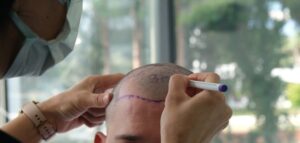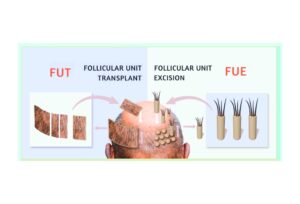Self-image has become highly prioritized among society. These cells are able to grow their own hair follicles. The cells produced in vitro form organoids, which fuse together to create polarized cysts. Over time, the polarized cysts collectively create new layers of skin, that grow their own hair follicles on the laboratory mice.
Simple Science Behind Hair Loss Treatment.
Are Stem Cells the Cure to Hair Loss?
Self-image has become highly prioritized among society. Everywhere we turn we face social image standards. From fashion, to beauty, to accessories the demand to look presentable is soaring, and hair loss is a heavy weight to carry. In America alone, fifty million men and thirty million women are dealing with hair loss daily. Recent studies may have brought scientists one step closer to the finish line, and it’s all thanks to Stem Cells, and mice.
h3>What are Stem Cells?
 Stems cells are viewed as “undifferentiated cells.” Our bodies contain a wide range of different types of cells, that perform different functions. Blood cells can generate blood, bone marrow cells can generate bone marrow, skin cells can regenerate skin, and so on. “Undifferentiated cells” contain no specific purpose, and therefore generate whatever the scientists need. In recent weeks, a research team from the University of South Carolina transplanted stem cells into shaved mice, and the results were ground breaking.
Stems cells are viewed as “undifferentiated cells.” Our bodies contain a wide range of different types of cells, that perform different functions. Blood cells can generate blood, bone marrow cells can generate bone marrow, skin cells can regenerate skin, and so on. “Undifferentiated cells” contain no specific purpose, and therefore generate whatever the scientists need. In recent weeks, a research team from the University of South Carolina transplanted stem cells into shaved mice, and the results were ground breaking.
The Method of Success
Dr. Cheng-Ming Chuong, a professor of pathology, and his team are currently working on using stem cells reproduced in vitro. These cells are able to grow their own hair follicles. In humans, we reach an age where we can no longer produce new cells as quickly, or efficiently. This occurs in mice as well however, thanks to the scientists, the age of the mice does not matter; new hair follicles grow anyway.
Simple Science Behind the Method
 The cells produced in vitro form organoids, which fuse together to create polarized cysts. Over time, the polarized cysts collectively create new layers of skin, that grow their own hair follicles on the laboratory mice. Human trials have not yet started. Scientists are hopeful this new discovery will ignite a new treatment for hair loss.
The cells produced in vitro form organoids, which fuse together to create polarized cysts. Over time, the polarized cysts collectively create new layers of skin, that grow their own hair follicles on the laboratory mice. Human trials have not yet started. Scientists are hopeful this new discovery will ignite a new treatment for hair loss.

















